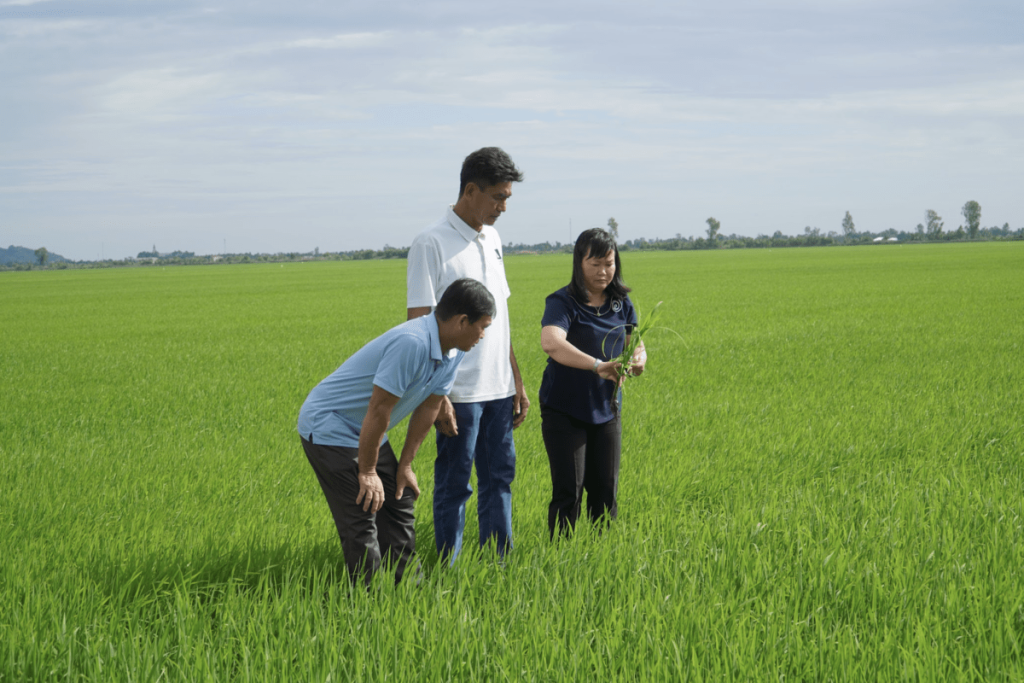Tags
Low-emission rice farming brings higher profits, cash bonuses
Completing harvesting recently, many farmers in Can Tho City have been offered cash bonuses for growing low-emission rice in accordance with the ‘one must, five reductions’ cultivation package.

Can Tho farmers apply new farming method (Photo: NNVN)
To promote ecological and sustainable rice production techniques, the Can Tho Department of Crop Production and Plant Protection and the International Rice Research Institute (IRRI) have conducted a pilot program with economic encouragement offered to farmers practicing rice production according to the “1 must, 5 reductions” farming package.
On July 30, they conducted a review of the pilot program in Can Tho. Thirty farming households were found having emission reduction of less than 1 ton of CO2 per hectare, and eight households more than 1 ton of CO2 per hectare. The total amount of bonus the households received was VND20 million.
The bonus is given to encourage farmers to apply sustainable farming and strive for high-quality rice production, low emissions and environmental protection.
Prior to that, harvesting of rice under a pilot low-emission farming model in Can Tho was completed after three months of planting. These are the first pilots of the project on sustainable development of 1 million hectares of high-quality, low-emission rice cultivation associated with green growth in the Mekong Delta.
Nguyen Cao Khai, director of Tien Thuan Cooperative, said that under the pilot model, the amount of used rice seeds fell from 140 kilograms to 60 kilograms per hectare, the number of fertilizer applications dropped by 3-4 times to 2 times per crop, and the volume of inorganic fertilizer decreased by at least 20 percent.
Thanks to the new model, epidemic risks and the post-harvesting loss rate decreased, and farmers could sell rice for VND200-300 more per kilogram than commonly cultivated rice.
In addition to reductions in input costs, Nguyen Ngoc Huan, director of Khiet Tam Cooperative, said the model offers other benefits. Instead of burning straw on rice fields after harvesting, farmers carry straw away and sell it at VND400,000 per hectare. The straw can be used to make fertilizer and grow mushrooms.
Huan said after the first crop, members of Khiet Tam Cooperative saw profits 15-20 percent higher than previously when they applied traditional cultivation.
Nguyen Van Hung from IRRI estimates that the decrease in amount of rice seeds used helped save VND1.2 million per hectare, while the drop in the amount of fertilizer helped save VND0.7 million. Meanwhile, the yield was 6.3-6.5 tons per hectare than the previous 5.8-6.1 tons per hectare.
https://vietnamnet.vn/en/low-emission-rice-farming-brings-higher-profits-cash-bonuses-2308165.htmlPublished Date: August 3, 2024






